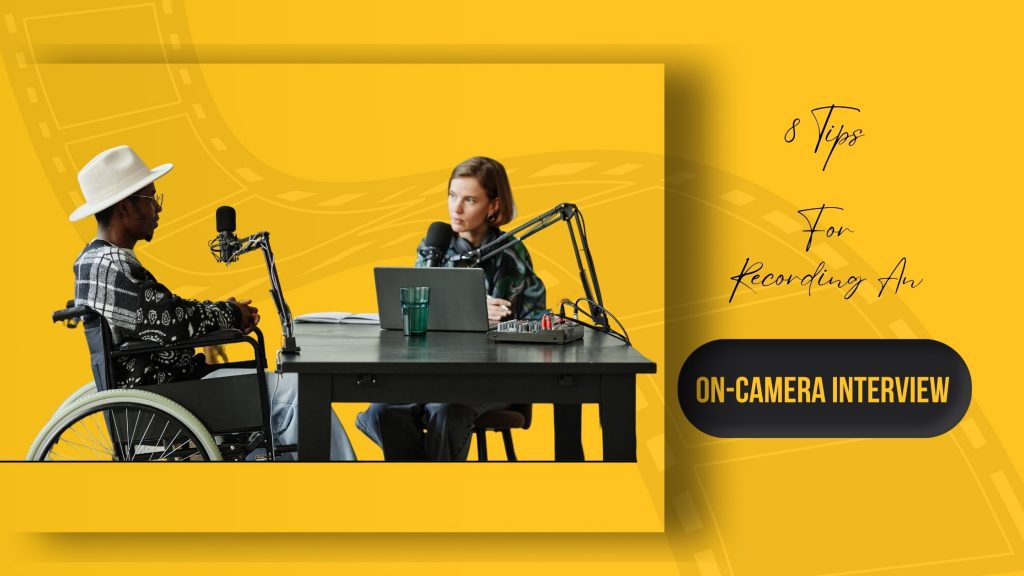In the realm of video production, on-camera interviews serve as powerful tools for capturing authentic narratives, conveying information, and engaging audiences. Whether you’re conducting interviews for documentaries, corporate videos, or promotional content, mastering the art of on-camera interviews is essential for delivering compelling and impactful storytelling. At BOXmedia, we understand the importance of producing high-quality interviews, and we’re here to share detailed tips and techniques to help you record on-camera interviews like a seasoned professional.
Understanding the Importance of On-Camera Interviews
On-camera interviews offer a unique opportunity to capture the human element of a story, allowing viewers to connect with interviewees on a personal level. Whether you’re featuring industry experts, thought leaders, or everyday individuals, on-camera interviews provide a platform for sharing insights, experiences, and perspectives in a visually engaging format. By incorporating on-camera interviews into your video content, you can enhance authenticity, credibility, and relatability, ultimately captivating your audience and leaving a lasting impression.
Tips for Recording an On-Camera Interview in Detail
1. Pre-Production Planning
Define Your Objectives
Before conducting an on-camera interview, it’s essential to clarify your objectives and goals for the interview. Determine the key messages you want to convey, the target audience you’re addressing, and the desired outcome of the interview. This clarity will guide your interview preparation and ensure that you stay focused on delivering impactful content that aligns with your overarching objectives.
2. Selecting the Right Location
Choose a Quiet and Controlled Environment
Selecting the right location for your on-camera interview is crucial for ensuring optimal audio and visual quality. Choose a quiet, controlled environment with minimal background noise and distractions. Ideally, opt for a well-lit space with ample natural light or professional lighting equipment to ensure clear visibility of the interviewee’s facial expressions and body language.
3. Setting Up the Shot
Positioning and Framing
Pay attention to the framing and composition of your shots to create visually appealing interview footage. Position the camera at eye level with the interviewee and frame the shot with adequate headroom and space around the subject. Consider the rule of thirds when framing your shots, placing the interviewee slightly off-centre for a more dynamic and engaging composition.
4. Conducting Pre-Interview Preparation
Build Rapport and Establish Trust
Before diving into the interview, take the time to build rapport and establish trust with the interviewee. Engage in casual conversation to help them feel comfortable and relaxed on camera. Explain the interview format, topics of discussion, and any technical aspects they need to be aware of. This pre-interview preparation will help put the interviewee at ease and set the stage for a successful interview.
5. Asking Open-Ended Questions
Encourage Detailed Responses
Craft open-ended questions that prompt the interviewee to provide detailed and insightful responses. Avoid yes/no questions and instead, focus on asking questions that encourage storytelling, reflection, and elaboration. By allowing the interviewee to share their thoughts and experiences freely, you’ll capture more compelling and authentic content that resonates with your audience.
6. Active Listening and Responding
Engage with the Interviewee
During the interview, practice active listening and respond attentively to the interviewee’s answers. Maintain eye contact, nod in agreement, and provide affirming gestures to demonstrate your engagement and interest in the conversation. Engaging with the interviewee in this way fosters a positive dynamic and encourages them to open up and share their insights more freely.
7. Monitoring Audio and Visual Quality
Check Audio Levels and Visual Composition
Throughout the interview, monitor audio levels and visual composition to ensure optimal quality. Use headphones to monitor audio in real-time and adjust levels as needed to prevent clipping or distortion. Continuously check the camera’s framing and focus to maintain a clear and well-composed shot. Address any technical issues promptly to avoid compromising the integrity of the interview footage.
8. Conducting Post-Interview Review
Review and Analyse the Footage
After completing the interview, take the time to review and analyse the footage to ensure that you’ve captured all essential content effectively. Pay attention to audio clarity, visual composition, and the interviewee’s delivery to identify any areas for improvement or additional takes. Conducting a thorough post-interview review will help you refine your interviewing skills and produce high-quality content consistently.
Conclusion: Elevating Your On-Camera Interview Technique
In conclusion, mastering the art of on-camera interviews requires careful planning, preparation, and execution. By following the tips and techniques outlined above, you can enhance your interviewing skills, produce compelling interview content, and engage your audience effectively. Whether you’re conducting interviews for corporate videos, documentaries, or promotional content, incorporating these best practices will help you capture authentic narratives and deliver impactful storytelling that resonates with your audience.

